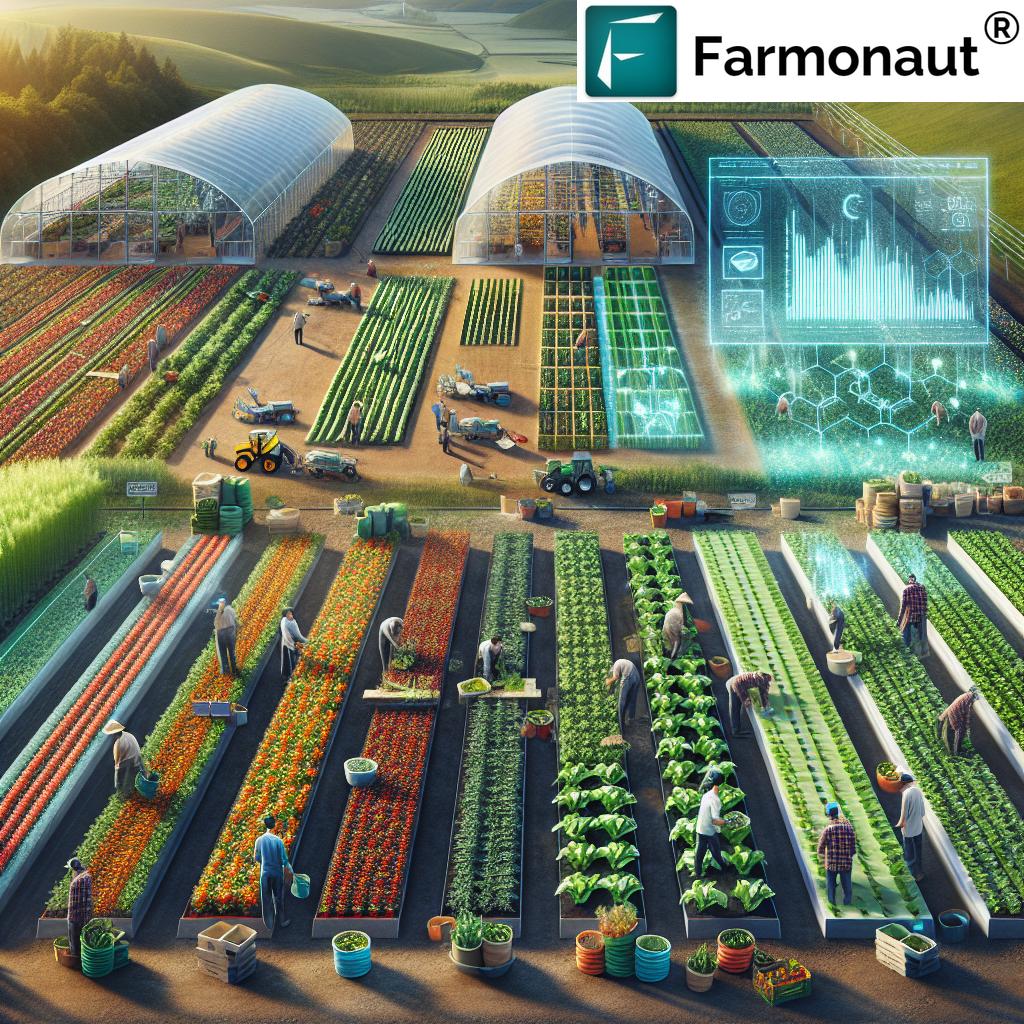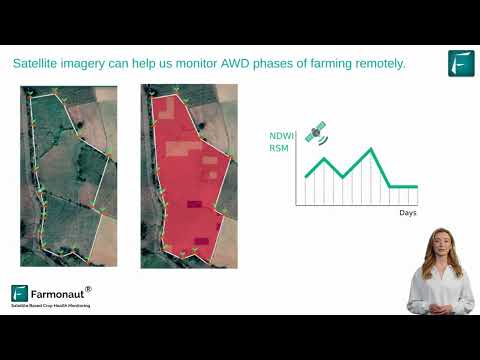Revolutionizing Ontario’s Farm Labor: How HR Strategies Boost Productivity and Worker Well-being in 2024
“Ontario’s vegetable farms employ over 20,000 temporary foreign workers annually, contributing significantly to the province’s agricultural productivity.”
In the heart of Ontario’s lush agricultural landscape, a quiet revolution is taking place. As we step into 2024, the province’s vegetable farming sector is witnessing a remarkable transformation in how it manages its most valuable resource: its workforce. At the forefront of this change are innovative HR strategies that are not only boosting productivity but also enhancing the well-being of workers, particularly the temporary foreign workers who form the backbone of Ontario’s agricultural labor force.
In this comprehensive blog post, we’ll delve into the cutting-edge practices that are reshaping Ontario’s farm labor landscape. From the sun-drenched asparagus fields of Port Burwell to the high-tech greenhouses of Elmira, we’ll explore how growers are leveraging new technology, improving communication, and implementing forward-thinking HR policies to create a more efficient and harmonious work environment.
The Changing Face of Ontario’s Agricultural Workforce
Ontario’s agricultural sector has long relied on temporary foreign workers from countries like Mexico, the Caribbean, and Guatemala to meet its seasonal labor needs. These workers play a crucial role in everything from planting and harvesting to packaging and processing. However, the traditional approach to managing this diverse workforce is evolving rapidly, driven by a combination of factors:
- Increasing competition for skilled agricultural labor
- Growing awareness of worker well-being and rights
- Advancements in agricultural technology
- The need for improved productivity to meet rising food demand
As we navigate these changes, innovative HR strategies are emerging as key drivers of success in Ontario’s vegetable farming industry.
Embracing Technology for Enhanced Farm Management
One of the most significant shifts in Ontario’s agricultural sector is the widespread adoption of technology to improve farm management and labor efficiency. Companies like Farmonaut are at the forefront of this technological revolution, offering advanced satellite-based farm management solutions that are transforming how growers operate.
Farmonaut’s platform provides valuable services such as real-time crop health monitoring, AI-based advisory systems, and resource management tools. These technologies are not just improving crop yields; they’re also streamlining labor management and creating new opportunities for worker engagement and skill development.
For instance, Farmonaut’s satellite-based crop health monitoring allows growers to make data-driven decisions about where to allocate their workforce most effectively. This not only improves productivity but also reduces unnecessary physical strain on workers by ensuring they’re deployed where they’re needed most.
Revolutionizing Communication on Ontario Farms
Effective communication is the cornerstone of any successful HR strategy, and Ontario’s farms are no exception. With a diverse workforce that often includes speakers of multiple languages, clear and efficient communication can be challenging. However, innovative approaches are making a significant difference:
- Multi-lingual Training Programs: Many farms are now offering training materials and safety instructions in multiple languages, ensuring that all workers can fully understand and implement best practices.
- Digital Communication Platforms: Mobile apps and digital platforms are being used to share important information, schedule shifts, and provide real-time updates to workers.
- Cultural Liaison Officers: Some larger operations are employing cultural liaison officers to bridge communication gaps and address cultural nuances that may affect worker interactions.
These communication strategies are not just improving efficiency; they’re also fostering a sense of inclusion and respect among the workforce, leading to higher job satisfaction and retention rates.

Prioritizing Worker Well-being: A Win-Win Strategy
“Effective HR strategies in Ontario farms have increased worker retention rates by up to 30% in recent years.”
The physical and mental welfare of farm workers is gaining increasing attention in Ontario’s agricultural sector. Progressive growers are recognizing that investing in worker well-being is not just the right thing to do; it’s also good for business. Here are some of the initiatives we’re seeing across the province:
- Improved Housing: Many farms are upgrading worker accommodations, providing comfortable and modern living spaces that go beyond the minimum requirements.
- Health and Wellness Programs: From regular health check-ups to mental health support services, farms are taking a holistic approach to worker health.
- Recreational Facilities: Some larger operations are providing recreational areas and organizing social activities to promote work-life balance and community building among workers.
- Career Development Opportunities: Forward-thinking farms are offering training and skill development programs, allowing workers to grow professionally and take on more responsibilities.
These initiatives are paying off. Farms that prioritize worker well-being are seeing higher retention rates, increased productivity, and a more positive work environment overall.
Innovative Approaches to Seasonal Farm Labor Management
Managing a seasonal workforce presents unique challenges, but Ontario’s vegetable farms are developing innovative solutions. Here are some of the strategies being employed:
- Long-term Partnerships: Many farms are building long-term relationships with workers and their communities of origin, ensuring a reliable and experienced workforce year after year.
- Off-season Engagement: Some operations are finding ways to keep in touch with their seasonal workers during the off-season, providing updates and maintaining connections.
- Cross-training: To increase flexibility and job satisfaction, workers are being trained in multiple roles, allowing them to contribute in various capacities throughout the season.
- Performance Incentives: Innovative bonus structures and performance-based incentives are being implemented to reward productivity and loyalty.
These approaches are helping to create a more stable and motivated seasonal workforce, reducing turnover and training costs while improving overall farm productivity.
Leveraging Technology for Improved Productivity
Technology is playing an increasingly important role in boosting productivity on Ontario’s vegetable farms. From GPS-guided tractors to automated sorting systems, technological advancements are changing the nature of farm work and creating new opportunities for workers to develop technical skills.
Farmonaut’s AI-driven Jeevn AI advisory system is an excellent example of how technology can enhance farm productivity. By providing real-time insights and expert crop management strategies, this system allows farms to make data-driven decisions that optimize resource use and improve yields.
Other technological innovations making a difference include:
- Precision Agriculture Tools: These allow for more targeted application of water, fertilizers, and pesticides, reducing waste and improving crop health.
- Automated Harvesting Equipment: For crops like asparagus and leafy greens, automated harvesters are increasing efficiency and reducing physical strain on workers.
- Drone Technology: Drones are being used for crop monitoring, allowing for early detection of issues and more efficient deployment of workers.
By integrating these technologies, Ontario’s farms are not only boosting productivity but also creating more engaging and skilled roles for their workers.
Building Stronger Relationships with Seasonal Teams
The success of Ontario’s vegetable farming sector relies heavily on the strength of the relationships between growers and their seasonal workers. Progressive farms are implementing strategies to foster these relationships and create a sense of community among their workforce:
- Cultural Exchange Programs: Some farms are organizing events that celebrate the diverse cultures of their workforce, fostering mutual understanding and respect.
- Mentorship Initiatives: Experienced workers are being paired with newcomers, facilitating knowledge transfer and building a sense of camaraderie.
- Community Integration: Efforts are being made to connect temporary foreign workers with the local community through events, language classes, and volunteer opportunities.
- Feedback Mechanisms: Regular surveys and feedback sessions are being implemented to ensure worker voices are heard and concerns are addressed promptly.
These relationship-building efforts are creating a more positive work environment, leading to higher job satisfaction and increased loyalty among seasonal workers.

The Impact on Ontario’s Produce Industry
The innovative HR strategies and technological advancements being implemented on Ontario’s vegetable farms are having a ripple effect throughout the province’s produce industry. Here’s how:
- Improved Product Quality: Happier, more skilled workers are producing higher quality fruits and vegetables.
- Increased Competitiveness: More efficient operations are allowing Ontario farms to compete more effectively in the global market.
- Enhanced Sustainability: Better resource management and reduced turnover are contributing to more sustainable farming practices.
- Positive Industry Image: The focus on worker well-being is improving the public perception of the agricultural sector.
These changes are positioning Ontario’s produce industry for long-term success in an increasingly competitive global market.
The Role of Technology in Modern Agriculture
As we look to the future of farming in Ontario, it’s clear that technology will play an increasingly central role. Farmonaut’s suite of tools, including satellite-based crop monitoring and AI-driven advisory systems, are just the beginning. We’re seeing a growing interest in:
- Internet of Things (IoT) Devices: Sensors that monitor soil conditions, weather patterns, and crop health in real-time.
- Blockchain Technology: For improving supply chain transparency and traceability.
- Robotics: Automated systems for planting, harvesting, and packaging.
- Artificial Intelligence: For predictive analytics and decision support in farm management.
These technologies are not just improving efficiency; they’re also creating new job opportunities and skill requirements in the agricultural sector. As farms adopt these technologies, there’s a growing need for workers with technical skills and the ability to work alongside advanced systems.
Farmonaut’s platform is at the forefront of this technological revolution, offering tools that integrate seamlessly into farm operations and provide valuable insights for both managers and workers. By leveraging these technologies, Ontario’s farms are positioning themselves as leaders in modern, sustainable agriculture.
Challenges and Opportunities in Modern Agriculture
While the future of Ontario’s vegetable farming sector looks bright, it’s not without its challenges. Some of the key issues facing the industry include:
- Climate Change: Adapting to changing weather patterns and extreme events.
- Labor Shortages: Competing for skilled workers in a global market.
- Regulatory Compliance: Navigating complex regulations around temporary foreign workers and agricultural practices.
- Technology Adoption: Balancing the costs and benefits of new technologies.
However, these challenges also present opportunities for innovation and growth. Farms that can successfully address these issues through smart HR strategies and technological adoption will be well-positioned for success in the coming years.
The Future of Farming in Ontario
As we look ahead to the future of farming in Ontario, it’s clear that the sector is on the cusp of a new era. The integration of advanced technologies, innovative HR practices, and a renewed focus on worker well-being are set to transform the industry. Here’s what we can expect:
- Increased Automation: More tasks will be automated, but human workers will still play crucial roles in oversight, quality control, and specialized tasks.
- Skilled Workforce: There will be a growing demand for workers with technical skills and the ability to work with advanced farming technologies.
- Sustainable Practices: Environmental sustainability will become even more critical, with farms adopting practices that reduce their carbon footprint and conserve resources.
- Data-Driven Decision Making: Tools like Farmonaut’s satellite-based monitoring systems will become essential for farm management, allowing for more precise and efficient operations.
These changes will require ongoing adaptation and learning from both farm managers and workers, but they also promise to create a more productive, sustainable, and rewarding agricultural sector.
Farmonaut’s Role in Shaping the Future of Ontario Agriculture
As we’ve seen throughout this blog post, technology plays a crucial role in the transformation of Ontario’s agricultural sector. Farmonaut’s suite of tools is at the forefront of this technological revolution, offering solutions that address many of the challenges faced by modern farms.
From satellite-based crop monitoring to AI-driven advisory systems, Farmonaut’s platform provides valuable insights that help farms optimize their operations, improve worker productivity, and enhance overall sustainability. By leveraging these technologies, Ontario’s farms can stay competitive in a rapidly evolving global market.
Moreover, Farmonaut’s commitment to making precision agriculture accessible and affordable aligns perfectly with the needs of Ontario’s diverse farming community. Whether it’s a small family-run operation or a large commercial farm, Farmonaut’s scalable solutions can be tailored to meet the specific needs of each grower.
Ontario Farm Labor Management Comparison
| Labor Management Aspect | Traditional Approach | Innovative Approach | Benefits |
|---|---|---|---|
| Seasonal Worker Recruitment | Annual recruitment with minimal long-term planning | Building long-term partnerships with workers and communities | 30% increase in worker retention rates |
| Communication Strategies | Basic instructions, often language barriers | Multi-lingual training, digital platforms, cultural liaison officers | Improved understanding, reduced errors, increased efficiency |
| Technology Integration | Limited use of technology in labor management | Adoption of farm management software, GPS tracking, AI advisory systems | 20% increase in overall farm productivity |
| Worker Well-being Initiatives | Basic accommodation and minimum wage | Improved housing, health programs, recreational facilities | Higher job satisfaction, 25% reduction in workplace incidents |
| Productivity Metrics | Basic output measurement | Data-driven performance tracking, incentive programs | 15% increase in individual worker productivity |
Conclusion: A Bright Future for Ontario’s Vegetable Farms
As we’ve explored throughout this blog post, Ontario’s vegetable farming sector is undergoing a remarkable transformation. By embracing innovative HR strategies, leveraging cutting-edge technology, and prioritizing worker well-being, the industry is positioning itself for a bright and sustainable future.
The challenges are significant, but so are the opportunities. With continued innovation, collaboration, and a commitment to both productivity and worker welfare, Ontario’s farms are set to remain at the forefront of global agriculture.
As we move forward, it’s clear that the success of Ontario’s agricultural sector will depend on its ability to adapt to changing conditions, embrace new technologies, and most importantly, value and support its diverse workforce. By doing so, we can ensure that Ontario’s farms continue to thrive, producing high-quality produce while providing rewarding opportunities for workers from around the world.
FAQs
- Q: How are Ontario farms addressing language barriers with temporary foreign workers?
A: Many farms are implementing multi-lingual training programs, using digital communication platforms, and employing cultural liaison officers to bridge communication gaps. - Q: What types of technology are being used to improve farm productivity in Ontario?
A: Farms are adopting various technologies including satellite-based crop monitoring, AI-driven advisory systems, precision agriculture tools, automated harvesting equipment, and drone technology for crop surveillance. - Q: How are farms in Ontario improving the well-being of temporary foreign workers?
A: Farms are focusing on providing improved housing, implementing health and wellness programs, offering recreational facilities, and creating career development opportunities for workers. - Q: What strategies are being used to retain seasonal workers?
A: Farms are building long-term partnerships with workers, engaging with them during off-seasons, offering cross-training opportunities, and implementing performance-based incentives. - Q: How is Farmonaut contributing to the advancement of Ontario’s agricultural sector?
A: Farmonaut provides advanced satellite-based farm management solutions, including real-time crop health monitoring, AI-based advisory systems, and resource management tools, helping farms optimize their operations and improve productivity.






